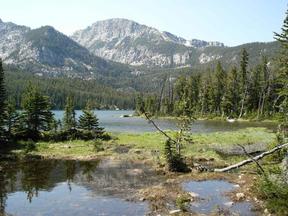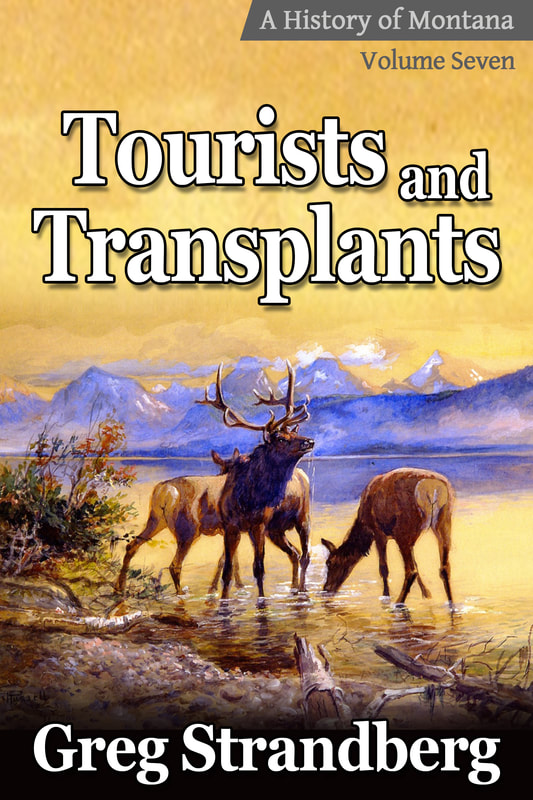 Tobacco Root Mountains
Tobacco Root Mountains
That means Steve Bullock and Greg Gianforte have 303 days to convince the people of Montana that they’re right for the job.
How will they do that?
I don’t know.
I can put forward some ideas, however, and they mainly consist of the following:
- Message: The campaign that can craft a more persuasive message will win. What that message is I’m not sure, though I have a feeling it focuses on jobs, not social issues. I have a feeling it talks about the solutions you need, not the problems you have. I bet it questions the status quo and how things are going, not how good things are and how much they’ll improve.
- Outreach: The campaign that can touch more voters will win. You can do that will mailings, TV ads, radio spots, mailers, newspaper letters, opinion columns, and regular meet-and-greet events. This requires a candidate to be in the state, all over the state. It requires consistency and discipline and a can-do, positive attitude even on the worst days.
Those are two things.
Notice I didn’t say money. Money sure helps a lot with those things, but it’s not critical.
Mainly, you need ideas. You need the ability to react quickly. You have to be likeable and you have to be fun and quick-witted and a regular, everyday kind of guy.
I have a feeling both candidates will struggle with those last points.
Besides that stuff, let’s go back in history and see if we can learn anything.
Let’s take a look at Montana gubernatorial elections going back 35 years:
- In 2012 the Democrats won with 236,000 votes to the Republicans’ 229,000. That’s 49% to 47%.
- In 2008 the Democrats won with 319,000 votes to the Republicans’ 158,000. That’s 65% to 33%.
- In 2004 the Democrats won with 225,000 votes to the Republicans’ 205,000. That’s 50% to 46%.
- In 2000 the Republicans won with 209,000 votes to the Democrats’ 193,000. That’s 51% to 47%.
- In 1996 the Republicans won with 320,000 votes to the Democrats’ 84,000 votes. That’s 79% to 21%.
- In 1992 the Republicans won with 209,000 votes to the Democrats’ 198,000 votes. That’s 51% to 49%.
- In 1988 the Republicans won with 190,000 votes to the Democrats’ 169,000. That’s 52% to 46%.
- In 1984 the Democrats won with 267,000 votes to the Republicans’ 100,000 votes. That’s 70% to 26%.
- In 1980 the Democrats won with 200,000 votes to the Republicans’ 161,000. That’s 55% to 45%.
So for as long as I’ve been alive, Montana Democrats have won the governor’s office 5 times and Montana Republicans have won it 4 times.
We can see that Democrats have had the office for the past 3 terms, the GOP had it for 4 terms before that, and before that the Democrats had it for 5 terms, since Forest Anderson in 1968.
Are we due for a change?
I think so.
One thing that makes that change easier is when turnout is high. You saw that the Montana GOP won big in 1996 with 320,000 votes.
Considering that a Republican won the next time around, though with 111,000 fewer votes, it’s clear that there’s a lot of crossover appeal for Montana voters…if the candidate is right.
Is Gianforte the right candidate?
Well, he’s no Marc Racicot.
Racicot was damn popular back in the day, and lots of Reagan Democrats switched over and voted for him.
Oh, and by the way, many of us born in the 80s (and probably all born after that) have no idea what that term “Reagan Democrat” means today.
Time to get a new term.
The thing is, however, Racicot got into the governor’s office with the exact same vote count that Martz, his successor, got into office with as well – 209,000 votes.
In that regard, Gianforte will have a helluva easier time getting his second term than he will his first.
What about Bullock?
I’m sorry, but I feel Bullock is a Martz – someone that rode the coattails of a more popular, more capable politician.
Racicot energized Republicans, just like Schweitzer energized Democrats. Both had wide crossover appeal for Montana’s independent-minded voters as well.
Just like Racicot, Schweitzer had a landslide reelection victory. Ted Schwinden had much the same in 1984.
Turnout really is the key.
For that reason, the presidential race is a huge determiner in Montana’s gubernatorial race.
As I’ve said many times, it really depends on who the nominees are for both parties.
Let’s go over some hypotheticals:
- Hillary: If Hillary wins the nomination then you can expect the state to go Republican. Another thing you can expect is that Democratic turnout will be lower. Many Democrats simply aren’t interested in Hillary and quite a few despise her. In protest, these people could stay home. That hurts Bullock a lot, and every down-ticket race.
- Bernie Sanders: If Bernie gets the nod then you can expect Democratic turnout to be a lot higher, I’m going to say by 5% to 7%. If this happens we could see Bernie take the state, just as Bill Clinton did in ’92 (prior to that no other Democratic presidential candidate took the state since Johnson in ’64 (Truman took it in ’48 as well)). Bullock will almost certainly win if this happens. Alas, he and the rest of the Helena Cabal are pinning their hopes on Hillary. They might have political know-how when it comes to the machine, but they have none when it comes to the people.
- Trump: If Trump gets the nod expect Republican turnout in Montana to be through the roof, probably 5% to 10% higher than usual. He appeals to the base, the moderates, and the Tea Party crowd…all in different ways. Besides that he'll nab those Reagan Democrats and most of the Independents. This will almost certainly ensure that Gianforte wins, and it could give a very lopsided legislature to the GOP as well, with Democrats hanging even more precariously to their urban perches than usual.
- Jeb: The safe bet for the GOP is a brokered convention that allows Jeb to come to the fore. He’s raised a lot of money from the rich and done his job by giving it to their media outlets. He’ll be rewarded for that. If this is the case, expect GOP turnout to be what it would be in a regular year, though don’t expect any crossover vote whatsoever. There could be some that turn to the Democrats (though probably not Hillary) because they don’t like the idea of aristocracy. This could hurt Gianforte and it’ll certainly help urban-area Democrats.
I don’t feel there’s any reason to speculate on any other candidates. Cruz and Rubio could make it to VP, but I don’t see anything more.
One note on O’Malley. It’s vital that he stays in to the end, all the way to the convention.
If Bernie goes down, he’s the only hope the Democratic Party has to keep from going fully over to the dark side.
And an added side note - what kind of Republican is Gianforte? The brash and bold Trump type or the safe and moneyed Jeb type?
And which does he want to win? Perhaps more importantly, which one winning would help him the most?
I’d like to take a moment now to discuss some things that I expect to see happen this election cycle in Montana.
- Anonymous Attacks: I never see Republicans doing anonymous attacks, just Democrats. For instance, on Twitter it’s always fake Daines accounts or Art Wittich accounts or accounts that mock Republicans. I can’t recall seeing any that are obviously fake doing the same against Democrats. I just don’t see that too much. In that regard, I expect to see a lot of this tactic from Democrats. The good news is that when you see this you know your tactics are working. Also, this does nothing to woo voters. It’s just campaign staff talking to one another, a clear sign that they don’t have enough work to do.
- Dem Blogs: I expect MT Cowgirl and Intelligent Discontent will continue to put out their brand of Montana opinion. For the former, we’ll continue to see the anonymous attacks, though sprinkled with guest posts from vetted state personalities that the Helena Cabal deems worthy, and capable, of directing the debate. For the latter, expect vitriolic frustration and angst at the Democratic Party’s inability to win expressed in blog posts mocking anything that, again, the Helena Cabal doesn’t agree with.
- Sleeping Beauties: I’m not expecting much in the way of reporting from our sleeping beauties, or as you call them, the daily newspapers. Currently, we know that some reporters are very favorable to Bullock and the Helena Cabal. I list Troy Carter as a prime example of this. On the other end, there are reporters more inclined to support Gianforte. The editorial staff at the Billings Gazette comes to mind. Successful campaigns will identify how these individuals help or hurt their campaigns and devise strategies accordingly.
- Heavier Rotation: How many times can you see the same cowboy standing beside a falling down fence telling you the same tired spiel? Steve Danes thought we could see it about every 2 minutes last cycle. Maybe that’s why he won. I do know that that’s why every Montanan that watched TV despised him. Expect the winning gubernatorial campaign to have a much heavier ad rotation this cycle, with old ads going away after a few days (possibly coming back later in the cycle) and new ads coming up faster. Tapping into the talent of our university film departments would both make this possible and protect against attacks that you’re spending too much out of state.
Well, I think I’ve put out enough ideas for tonight.
Expect to see some campaigns latch onto ‘em, just as the secret Democratic caucus in February will latch onto some of my 2017 legislative bill ideas.
That’s the thing – those with ideas are the ones that win.
We’ll see which party comes up with the best ideas in 2016.
The one that does will win.

